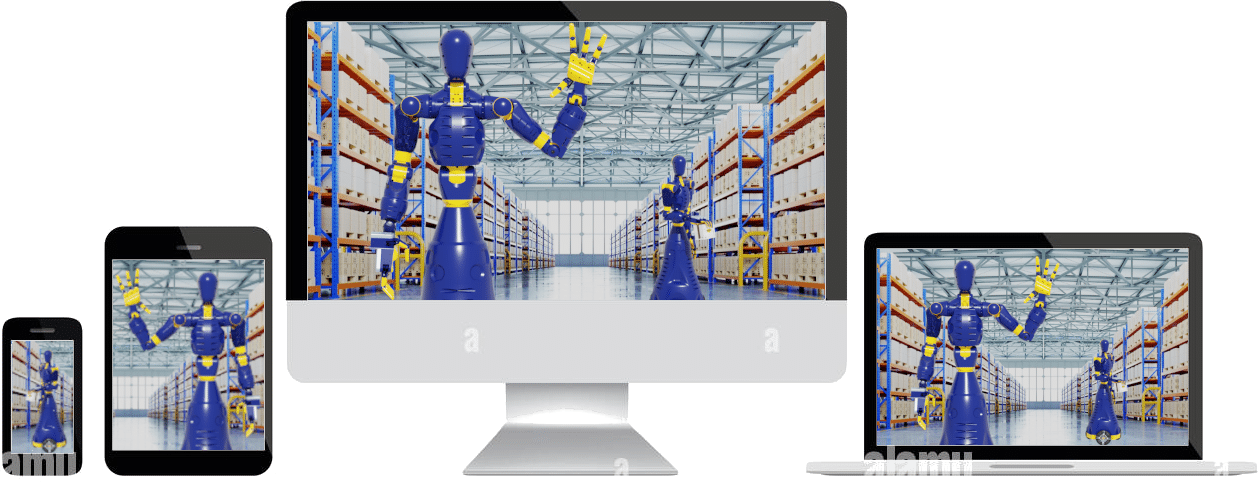In the dynamic landscape of modern logistics and supply chain management, the surge towards robotic automation in warehouses stands as a testament to technological progress and the relentless pursuit of operational excellence. This ultimate guide sheds light on the intricate costs associated with the adoption of these avant-garde robotic systems, offering a deep dive into how they promise to redefine efficiency, productivity, and profitability in warehousing operations.
Table of Contents:
- Understanding Robotic Automation in Warehouses
- Initial Investment Costs
- Operational Costs
- ROI and Cost-Benefit Analysis
- Case Studies
- Future of Robotic Automation in Warehousing
- Conclusion
Understanding Robotic Automation in Warehouses
Robotic automation in warehouses encompasses the deployment of AI-powered robots and automated systems designed to perform a range of tasks, from sorting and picking to packaging and shipping. These intelligent machines are not merely tools but strategic assets that drive innovation and efficiency.
Types of Robotic Systems Used in Warehouses:
- Autonomous Mobile Robots (AMRs)
- Automated Guided Vehicles (AGVs)
- Robotic Arms (Pick and Place)
- Drone Inventory Systems
Initial Investment Costs
The capital expenditure for robotic systems varies significantly, depending on the type, sophistication, and quantity of robots. AMRs, for example, can range from $15,000 to $100,000 per unit.
Beyond the purchase, the cost of seamlessly integrating these robots into existing warehouse infrastructure and systems is pivotal. This includes software integration, workflow redesign, and initial setup, potentially adding another 20-30% to the initial investment.
Operational Costs
Regular maintenance and occasional repairs are essential for optimal performance, contributing to the total cost of ownership. However, the reduction of manual labor costs can offset these expenses over time.
Implementing robotic systems requires a skilled workforce capable of operating and maintaining these technologies. Training costs and the shift towards a more technologically savvy staff structure are critical financial considerations.
ROI and Cost-Benefit Analysis
The introduction of robotic automation leads to significant efficiency gains, reducing manual errors, enhancing speed, and allowing 24/7 operations without the constraints of human labor.
Although the upfront costs are considerable, the long-term savings through reduced labor costs, minimized errors, and optimized operations justify the initial investment. A detailed cost-benefit analysis can reveal a break-even point and long-term profitability.
Case Studies
Leading logistics companies and retailers have reported up to a 50% reduction in operational costs and a 25% increase in productivity after integrating robotic systems into their warehouses.
Adopting robotic automation is not without its challenges. It requires a cultural shift, ongoing training, and adaptation to new technologies. However, the benefits far outweigh the hurdles, offering a competitive edge in the rapidly evolving market.
Future of Robotic Automation in Warehousing
With continuous advancements in AI, machine learning, and robotics, the future of warehousing looks increasingly automated. The integration of IoT and data analytics further enhances the potential for efficiency and optimization.
The trend toward robotic automation is set to accelerate, with more businesses recognizing its transformative potential. As technologies become more accessible and affordable, small and medium-sized enterprises will also begin to adopt these innovations.
Conclusion
The journey towards robotic automation in warehousing is a strategic investment in the future of logistics and supply chain management. While the initial costs may seem substantial, the long-term benefits of enhanced efficiency, productivity, and scalability are undeniable. As we embrace the era of smart warehousing, the focus shifts from mere adoption to optimizing and integrating these technologies to achieve unprecedented levels of operational excellence.











